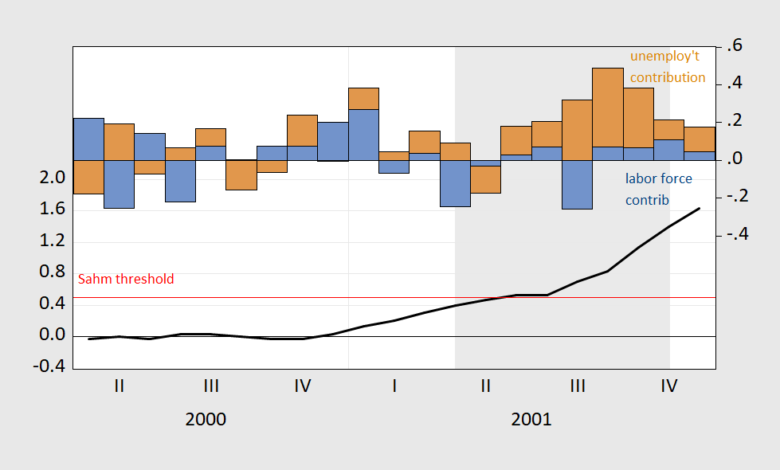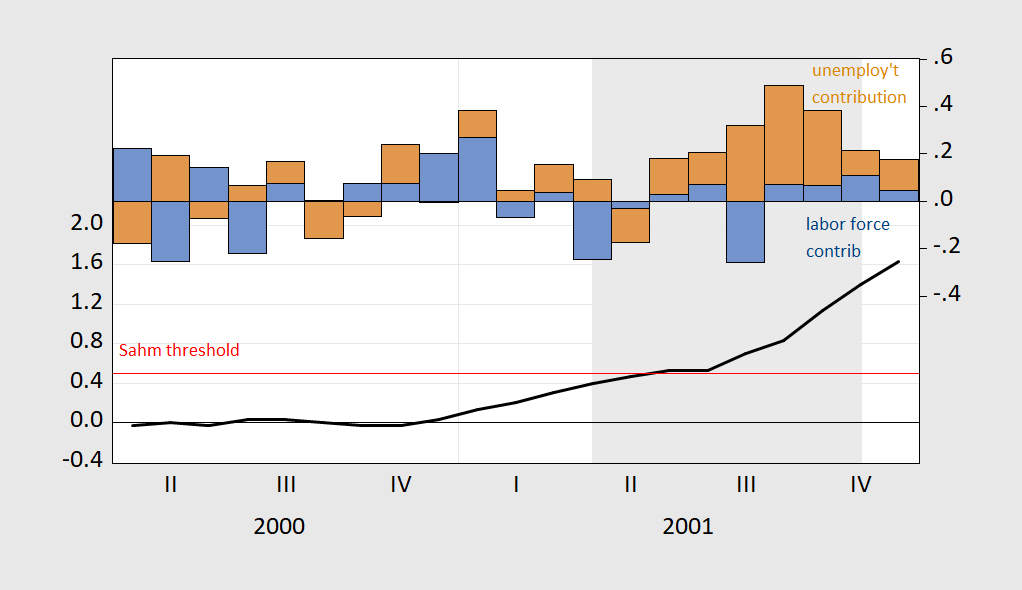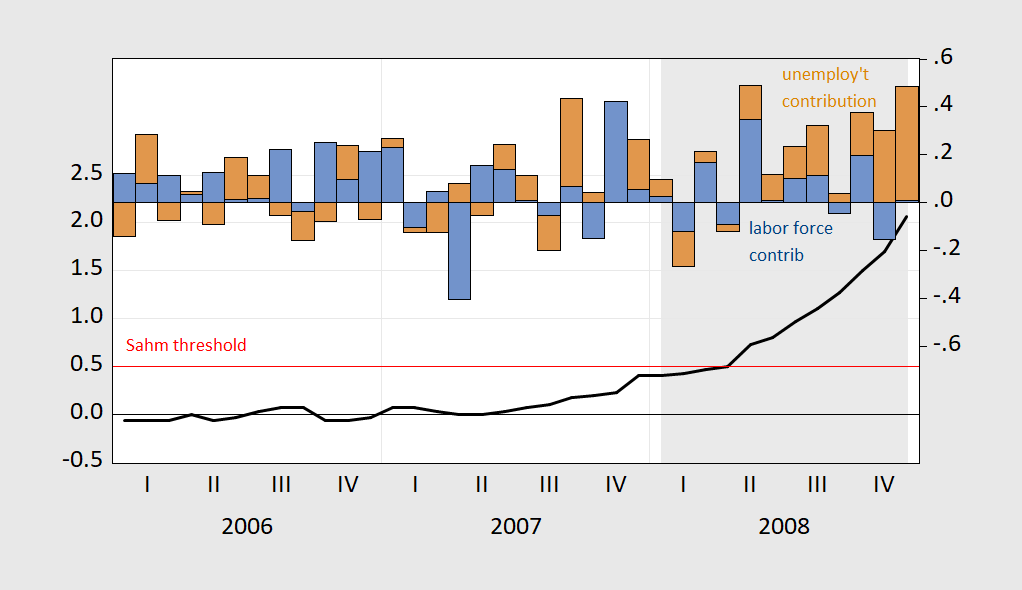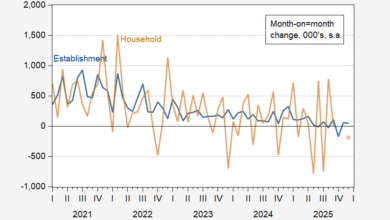
Recent vs. 2008 and 2001 recessions.
In the 2001 and 2008 recessions, the Sahm Rule (real time) threshold is passed when unemployment is rising mostly due to rising unemployment count (and not due to rising labor force). Figures 1 and 2 show the real time Sahm Rule measure (black line) vs. decomposition of contributions to change in unemployment rate.
Figure 1: Real time Sahm rule indicator (black, left scale), and contributions to change in unemployment rate, from increased labor force (blue bar, right scale), from greater number of unemployed (brown bar, right scale), all in percentage points. NBER defined month-after-peak to trough recession dates shaded gray. Source: FRED, BLS via FRED, NBER, and author’s calculations.
Figure 2: Real time Sahm rule indicator (black, left scale), and contributions to change in unemployment rate, from increased labor force (blue bar, right scale), from greater number of unemployed (brown bar, right scale), all in percentage points. NBER defined month-after-peak to trough recession dates shaded gray. Source: FRED, BLS via FRED, NBER, and author’s calculations.
Compare against the most recent breach of the threshold:
Figure 3: Real time Sahm rule indicator (black, left scale), and contributions to change in unemployment rate, from increased labor force (blue bar, right scale), from greater number of unemployed (brown bar, right scale), all in percentage points. Source: FRED, BLS via FRED, and author’s calculations.
The contribution from labor force growth is outsized in this episode, which is partly what Dr. Sahm was referring to (Yahoo finance):
“This time really could be different,” Sahm said. “[The Sahm Rule] may not tell us what it’s told us in the past, because of these swings from labor shortages, with people dropping out of the labor force, to now having immigrants coming lately. That all can show up in changes in the unemployment rate, which is the core of the Sahm Rule.”
Source link







